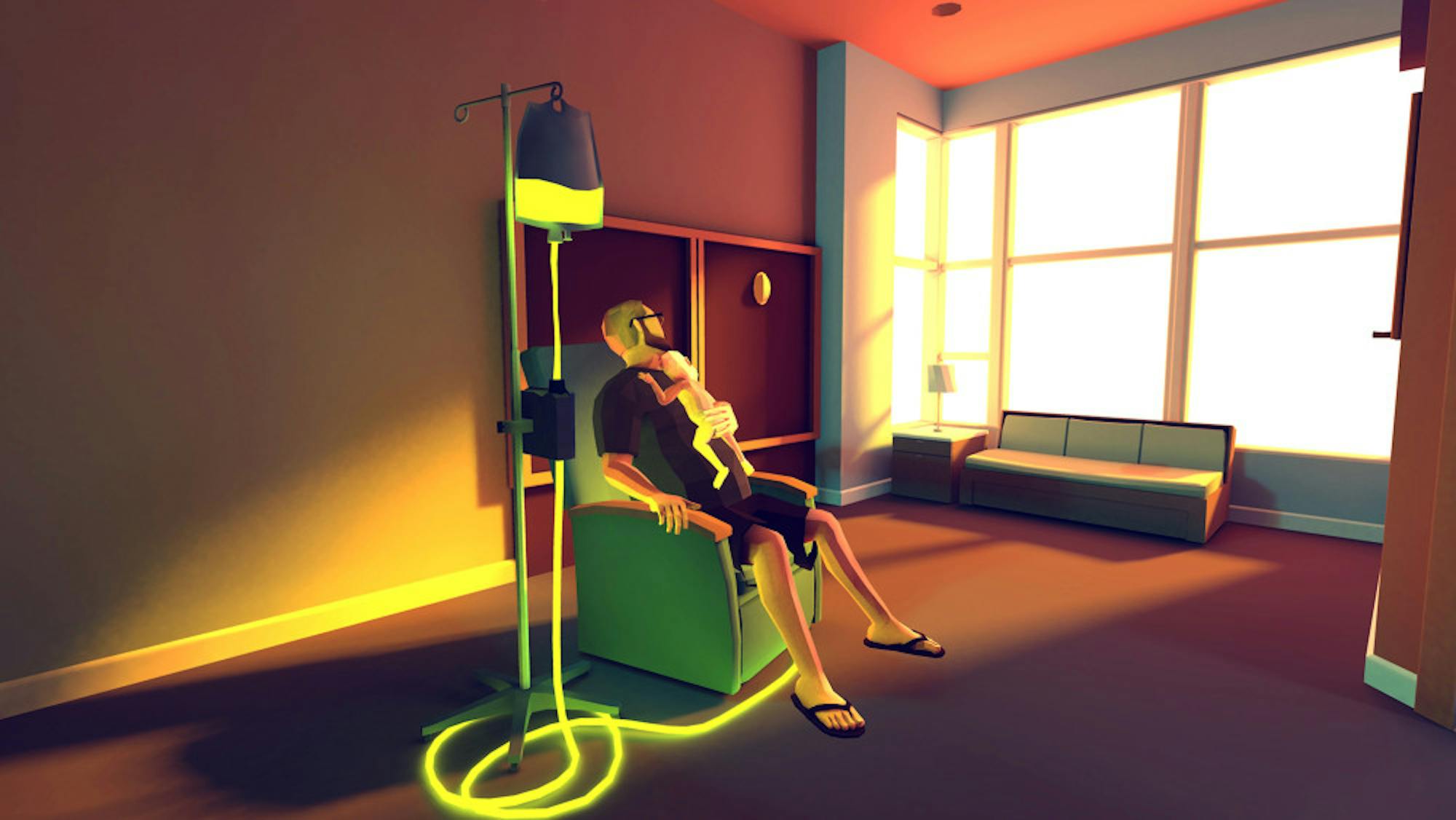“Are video games art?” is a question that is being asked with increasing frequency as the medium matures. The debate surrounding the artistic merits of video games is not black and white, but unfortunately often degenerates into simple comparisons between unconventional indie games made by small developers, held up as paragons of video-games-as-art, and the greed-driven monotony of the “Call of Duty” series (2003–present), that are commonly derided as being hollow and without depth. If ever there was a title that goes some way towards settling this debate and answering the question of whether or not video games have the capacity to make their players feel, it is “That Dragon, Cancer” (2016).
“That Dragon, Cancer” is the outgrowth of the grief of two parents, Ryan and Amy Green, who lost their five-year-old son Joel to cancer in 2014. The Greens sought to memorialize Joel through a video game that recounts their experience raising Joel as he battled cancer. After a somewhat troubled development, including delays and an initially timed exclusivity deal with the ill-fated Ouya microconsole, “That Dragon, Cancer” released on Jan. 12 and took the shape of a point-and-click adventure game made up of a collection of mechanically simple vignettes.
The actual game portion of “That Dragon, Cancer” is relatively thin. Each of the vignettes the player must encounter is an episode in the lives of the Greens and Joel’s battle with cancer and necessitates almost no substantial player thought or skill to complete, with many simply requiring the player to click the mouse. One level, for example, in a kart racer-esque sequence, has the player take control of a child’s wagon and race with Joel around the children’s cancer ward collecting colorful, floating objects and avoiding obstacles. The wagon automatically accelerates, and the player must simply use the mouse to shift it to the left or right. However, the player needs to do very little to successfully complete the sequence, as there is no meaningful penalty for crashing into obstacles, and the objects the player must collect are so large that they are nearly impossible to miss. This sequence, despite being thoroughly uninteresting and unchallenging to play, ends on a poignant note, as the screen that shows the player’s “score” reveals that each object they collected represents one of the many painful medical procedures, from blood transfusions to surgeries, that Joel underwent. This sequence, which minimizes challenge and gameplay in the interest of conveying the Greens' experience illustrates the game's philosophy.
Beyond the deliberately unchallenging gameplay, “That Dragon, Cancer” benefits from outstanding presentation both visually and aurally. Visually, the game’s art employs a blocky style that makes it appear as if its brightly colored characters and environments were hewn from Play-Doh. The one deviation from this style is the pitch-black, jagged, tree-like forms that represent cancer. The contrast is striking and uncomfortable to behold.
The audio in “That Dragon, Cancer” is impeccably executed, with voice actors delivering their lines with an authenticity that rivals that of games with multi-million dollar budgets. Beyond the excellent delivery, the game’s dialogue is also impeccably well written and is suffused with the Greens' Christian faith, particularly their belief in grace and the goodness of God’s plan, both of which are communicated with heartbreaking sincerity. The soundtrack on the other hand, while competently executed, never intrusive and always tonally appropriate, verges into cliché “bittersweet piano” territory a little too often.
On the surface, $15 may seem like a lot to ask for a short game that offers very little in the way of traditional gameplay, but the quality of the art direction and the sheer uniqueness of the emotional intensity that “That Dragon, Cancer” brings make it well worth your time.
“That Dragon, Cancer” is available on Mac, Windows, and the Ouya / Forge TV for $14.99
'That Dragon, Cancer' is heart wrenching and unconventional

A screenshot from "That Dragon, Cancer."
Summary
Poignant and utterly unlike anything that has been released before, “That Dragon, Cancer” is worth your time
4 Stars





